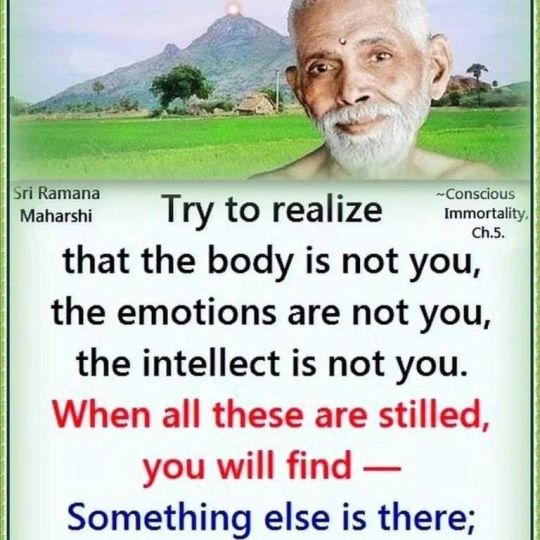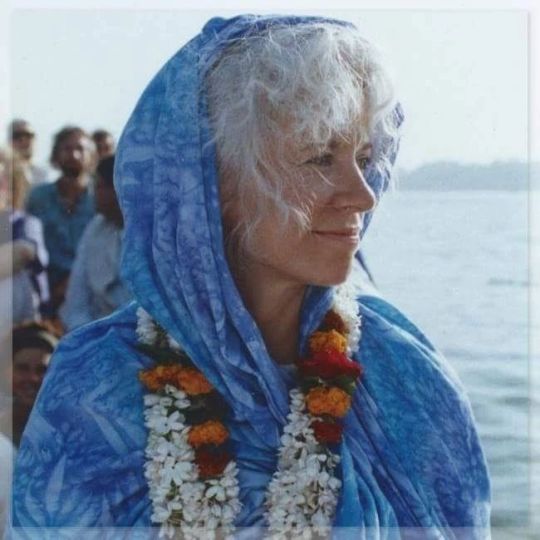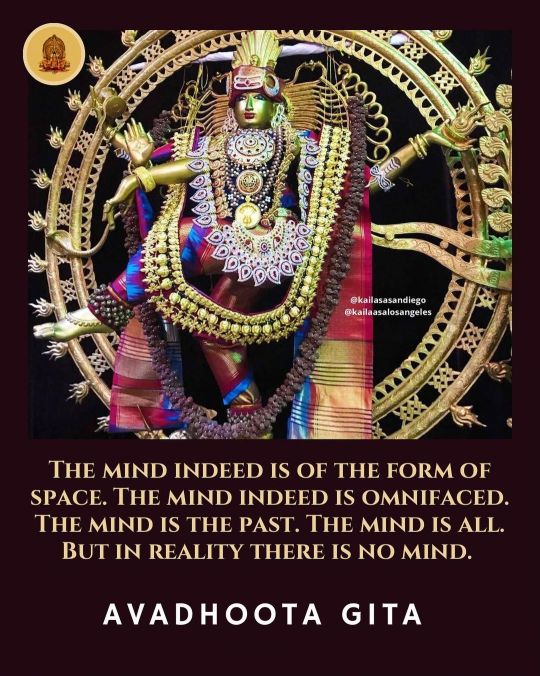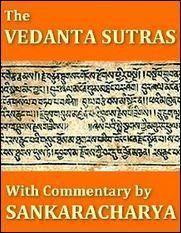#advaitavedanta
Note
Hey I hope this doesn't sound weird or anything. I just noticed the AUM symbol in your description. Can I ask you some questions....? Is law of assumption compatible with Hinduism? Can you show some examples or verses....?
Consciousness and the void in Hindu scriptures
I will be focusing on the concepts of consciousness and the world only, also there are some stuff about the void state here.( Yes, the concept of void is thousands of years old, in eastern spiritual traditions)
1) Adwayaraka upanishad-
(2) Always realizing "I am of the nature of Consciousness (cit)," with eyes completely shut or else with eyes somewhat open, by looking inward above the eyebrows - he, beholding the Absolute, the Supreme, in the form of a multitude of fires of Being Consciousness Bliss, assumes the appearance of luminosity.
2) Mandukya Upanishad
(6)The experiencer of these states of consciousness is the Lord of all. This one is all-knowing; this one directs everything from within. This one is the womb of all. All things originate from and dissolve into this.
As you know there are three states- waking, dreaming and sleeping state. Now there is a fourth- called turiya( this is my Tumblr name lmao) TURIYA is not state, but the experiencer of all! Turiya is what experiences the world in waking state, creates a new world in dreaming state and is still present in the sleeping state.
"When one experiences all the states of consciousness, then he establishes himself in his essential nature-Pure Consciousness and realizes that he is the all-knower. Then he acquires the knowledge that the Pure Consciousness flows on various degrees and grades, termed waking, dreaming, and sleeping. These states or modes of consciousness have arisen from their source, turiya, and finally dissolve in it. Yet the nature of Pure Consciousness, which is self-existent, never changes. It is everlasting, infinite, and changeless. "( From enlightenment without god-manduya upanishad)
(7)Turiya is the fourth state. In this state, consciousness is not turned inward nor outward nor both. tis undifferentiated; it is beyond the spheres of cognition and non-cognition. This state cannot be experienced through the senses or known by comparison or inference; it is incomprehensible, unthinkable, and indescribable. This is Pure Consciousness. This is the real Self. It is the cessation of all phenomena; it is tranquil, all-blissful, and one without second. This real Self is to be realized.
3) kashmiri shaivism
Consciousness of lord Shiva is not overshadowed by this created world. The world cannot obscure consciousness. On the contrary, consciousness gives rise to the existence of this world.
( swami lakshmanju)
When there is no sensation, only the supreme existence of God consciousness, that is the hightest state (parā).It is without sensation, because sensation remains only there where the sensation is felt by the feeler. God consciousness is not felt; it is your own Self.
( swami lakshmanju)
something very interesting about the void~
One should meditate on the void in one’s own body on all sides simultaneously. When the mind has become free from thoughts, one experiences everything as the Void.
(VERSE 43)
Therefore, before starting the practice of dharana on the internal space, you should first define the directions. within yourself and then mentally conceptualize those directions as nothing but empty space or void. By doing so you will find that gradually the mind ceases to identify with the gross body. Then, as the experience intensifies, the mind and body are separated and the thoughts cease. Having transcended the body and mind, the awareness identifies with the vast expanse of consciousness, which pervades the space all around it.
( This sound very similar to the void state right? It's a spritual practice from Vijanana bhairava tantra, a particular scripture for kashmiri shaivism. Yes, the translations are actually THE VOID, the void is translated from the word shunya in Sanskrit. From the concept of shunya, concept of zero was developed in India)
If one contemplates simultaneously that one’s entire body or the world consists of nothing but Consciousness, then the mind becomes free from thoughts and the supreme awakening occurs.
(VERSE 63) vijnana bhairava tantra
O great Goddess, one should concentrate on this universe as nothing but void. Dissolving the mind also like this, one then experiences the state of laya, or total dissolution.
Translation (58)
Laya means the state of dissolution'. Here, as in the previous dharanas, the universe is first dissolved into the void through a process of annihilation of everything that is contained within it. Thus the concept of the universe is transformed into nothing but the void of consciousness. When the universe is nothing but void, or shoonya, the mind is dissolved in the same way. By focusing the awareness on the void or empty space, the mind, which acts as a barrier to the higher experience on account of its continuous movement into the past, present and future, begins to lose its support and also dissolves. This leads to a totally new dimension of awareness, known as shoonya, which is all pervading stillness.
Commentary( 58)
Beyond reckoning in space or time; without direction or locality; impossible to represent; ultimately indescribable; Blissful with the experience of that which is inmost; a field of awareness free of mental constructs: that state of overflowing fullness is Bhairavī, the essence of Bhairava. It is that essence which is ultimately real & fundamental; it is that which ought to be known & experienced; it is that which is inherently pure, and it is that which pervades everything.
(Translated from Christopher wallis, Vijanana bhairava tantra)
4) Advaita vedanta
Our minds are just waves on the ocean of consciousness. As waves, they come and go. As ocean, they are infinite and eternal. Know yourself as the ocean of being, the womb of all existence.
-Nisargadatta Maharaj
"Give up identification with this mass of flesh as well as with what thinks it a mass. Both are intellectual imaginations. Recognize your true self as undifferentiated awareness, unaffected by time, past, present or future, and enter peace."
Adi Shankaracharya
One should not think ‘I am this – I am not that’. To say ‘this or that’ is wrong. They are also limitations. Only ‘I am’ is the truth. Silence is ‘I’. If one thinks ‘I am this’, another thinks ‘I am this’ and so on, there is a clash of thoughts and so many religions are the result. The truth remains as it is, not affected by any statements, conflicting or otherwise.
(Source: Talks with Sri Ramana Maharshi, Talk 248)
5) Ashtavakra gita
In me, the shoreless ocean,the ark of the universe,moves here and there, driven by the wind of its own mind(universalmind).I am not impatient.
O Marvellous! Iam really pure Consciousness.The world is like a magic show.Hence,how and where can there be any notion of rejection or acceptance in Me.
You are the endless sea In whom all the worlds like waves Naturally rise and fall. You have nothing to win, Nothing to lose.( 15.11)
You are in whatever you see. You alone. Just as bracelets and bangles And dancing anklets Are all of the same gold. (15.14)
The universe is but a thought in Consciousness. In Reality it is nothing. One who sees the true nature of existence and non-existence never ceases to exist. The Self--which is absolute, effortless, timeless, immaculate--is without limits and at no distance from you. You are forever It.
Beside all this you must have heard of this statement right?
Aham bhrahmasmi
which means I'm the ultimate reality. Here, the I is one's individual consciousness.
tat tvam asi
Which means you are the true essence or root or origin of everything which exists.
I can't cover everything in one go, so I only covered stuff which I have read about. I hope I have cleared your doubts. If you have any other questions, DM me.
575 notes
·
View notes
Text

2 notes
·
View notes
Photo

When the question 'Who am I?' is followed innocently, purely, all the way back to its source, there is a huge, astounding realization: There is no entity there at all! There is only the indefinable, boundless recognition of yourself as inseparable from anything else. You are free. You are whole. You are endless. There is no bottom to you, no boundary to you. Any idea about yourself appears in you and will disappear back into you. You are awareness, and awareness is consciousness. — Gangaji #Satsang #Advaita #AdvaitaVedanta #NisargaYoga #WhoAmI #Gangaji (at New Haven Zen Center) https://www.instagram.com/p/ClqY5w5OOzF/?igshid=NGJjMDIxMWI=
12 notes
·
View notes
Photo

#non-dualism#non-duality#non-dual#nonduality#nondualism#nondual#non duality#non dualism#non dual#advaita vedanta#advaitavedanta#advaita#jnani#jnana yoga#ramana maharshi
20 notes
·
View notes
Photo

When the question 'Who am I?' is followed innocently, purely, all the way back to its source, there is a huge, astounding realization: There is no entity there at all! There is only the indefinable, boundless recognition of yourself as inseparable from anything else. You are free. You are whole. You are endless. There is no bottom to you, no boundary to you. Any idea about yourself appears in you and will disappear back into you. You are awareness, and awareness is consciousness. — Gangaji #Satsang #Advaita #AdvaitaVedanta #NisargaYoga #WhoAmI #Gangaji (at New Haven Zen Center) https://www.instagram.com/p/ClqZbc2uRbL/?igshid=NGJjMDIxMWI=
6 notes
·
View notes
Text
DEFINING HINDUISM

Though I've been an atheist and still am one. Being born into a Hindu family has always made me proud. And the reason for this is that, after decades of research on spiritualism, particularly how it began and evolved from India through the Hindus, I've concluded. Hinduism is more than just a religion. So, if you're interested in understanding more about Hinduism and its nuances, let me tell you about my understanding of Hinduism.
In my view, a Hindu is an atheist, polytheist, monotheist, and henotheist. He is henotheistic because he believes in only one God yet acknowledges the presence of other deities and subsidiary gods. For example, while Shiva is the most superior Hindu god, Hindus also worship many other lesser gods to whom there is no end or limit. This means that a Hindu can pray to anything around - a tree, a cow, a mountain, a stone or a river.
This distinguishes Hinduism from all other religions. It is a philosophy, even though now muddled up with supernatural beliefs and traditions. Hinduism cannot be called a religion. It's a way of life for them. It arose from various interconnected thoughts such as demographics, cultural practices, and ancient philosophical scriptures and teachings.
It evolved over thousands of years and is the oldest known religion globally. All beliefs and myths add up from one generation to another—philosophers, pundits, commentators, interpreters, gurus, etc.
Each of them comes up with their names, concepts, and supernatural beliefs. Many religions, including a subset of religions, have been influenced by Hinduism, including Sikhism, Jainism, Buddhism, etc. I'd go so far as to say it's the mother of all religions.
According to Yajurveda, "All living beings are equally divine." As a result, when all living creatures are equally divine, and the Hindu religion accepts everyone and allows other religions to coexist in its embrace, it must have been the mother of all ideologies.
Add to that the fact that there is no conversion in Hinduism from one religion to another. It also doesn't have a founder or any precepts. It consists solely of Mahavakyas or great sayings.
The Hindus in Hinduism
Let's take a closer look at the term "Hindu." The Persians coined the term "Hindu," which they used to describe the people who lived beyond the Shindus River. They couldn't distinguish between the sounds "SA" and "Ha" when pronouncing the word Sindhu, So Sindhu turned Hindu.
As you must have noticed, there is no -ism in it. The term "Hinduism," which relates to the Hindu people's religion, was coined later. They could not understand its true nature as an outsider looking in and just called it a religion. Hinduism is a way of life, not a religion, to realise one's full potential.
God in Hinduism is that of pure consciousness. A final destination for Aatma (the soul) to realise absolute awareness. In Hinduism, unlike any other faith, the Creator and creation are the same. There is no distinction. Since you have that divinity within you, you are that potential divine. This means God is the highest state of pure consciousness to liberate the human body and mind we call Moksha.
The above implies that the divine exists because of you, the earth exists because of you, the universe exists because of you, and everything exists because of your aware-conscious energy contained in the soul. You, as the potential divine, came first, and god followed.
The Knowledge of Self
In Hinduism, this is what is divine. So, with this spiritual knowledge, the most crucial thing in life is not to follow traditions but self-knowledge for that self-awakening to realise self-awareness of who we are beyond body and mind. This self-awareness teaches you that God, Guru, and the Self are one. Advaita Vedanta is the name given to that absolute non-dual state of aware energy; the supreme ability of energy - Brahman referred to as Parabrahman or Paramatma; par meaning beyond.
All of this sprang from four Upanishad mahavakyas. When they declared, "Prajnanam Brahma," - Insight is the creator of everything in the cosmos (Brahman). The second, "Ayam Aatman Brahma", is Brahman - the Soul, which contains the spirit. Third, "Tat Tvam Asi" - That art Thou, and the fourth is "Aham Bhramasmi," which means "I am that Brahman, the one in many and the many in One - total energy.
The Vedas are the foundational texts of Hinduism; it concludes with Advaita Vedanta, which is the essence and philosophical knowledge of the Upanishads.
Let us now consider how supreme and sublime the entire concept of Hinduism's scriptures is. Perhaps this is why the Upanishads offered us four life goals to follow.
These four goals in life are Dharma, Artha, Kama, and Moksha.
· One of the numerous meanings of Dharma is righteousness, which means the divine order of the human person.
· The second purpose is Artha, which aims for economic growth.
· The Kama is the third. It is to fulfil your essential desires and, finally, to be satisfied.
· The ultimate objective for Hindus is to achieve Moksha or liberation.
Sanatan Dharma is the actual name of Hinduism. Sanatana is Sanskrit for "eternal law." And Dharma is the order of righteousness, formed by combining two words into one.
As to how?
Dharma refers to how you should live, whereas karma refers to how you are already living, with the Sanatan – eternal laws filling in the gaps.
The universal law of eternity, the universal rule of righteousness, the universal law of non-duality, where there is no duality or relativity; because the truth, God, and everything else is related towards duality in our mind to its opposite?
All you need to do now is awaken that God, the Atma, in the centre. So that the soul can check and guide the mind to make it alert, attentive and aware to progress from lower to higher consciousness towards non-duality in absoluteness for that ultimate fulfilment.
Therefore, Hinduism is different from all other religions. It teaches you that salvation is found more in your religiousness, devoutness in religiosity. To awaken and liberate from the clutches of the material mind experiencing to realise that the God Guru and the actual Self are lying dormant within.
Namaste, and thank you once again for giving me your precious time.
#hinduism#sanatandharma#vedas#upanishads#atman#brahman#advaitavedanta#selfknowledge#moksha#dharmic#divineconsciousness#karma#polytheism#hinduphilosophy#henotheism#spiritualism#vedicwisdom#ancientreligion#wayoflife#motherofallreligions.#Spotify
2 notes
·
View notes
Photo

Be in the sublime state of #unclutching and #realize the nature of your #existence! Does mind exist? @srinithyananda @nithyanandeshwaratemple_la #nithyananda #advaitavedanta #advaita #dattatreya #brahma #vishnu #mahesh #incarnation #vivekananda #selfrealization #freeyourmind #arunachala #shivashakti #upanishads #kailasa #enlightenment #spirituality #hinduism #sanatanadharma #vedic #superconsciousness #consciousness https://www.instagram.com/p/ChJLUVVrhs1/?igshid=NGJjMDIxMWI=
#unclutching#realize#existence#nithyananda#advaitavedanta#advaita#dattatreya#brahma#vishnu#mahesh#incarnation#vivekananda#selfrealization#freeyourmind#arunachala#shivashakti#upanishads#kailasa#enlightenment#spirituality#hinduism#sanatanadharma#vedic#superconsciousness#consciousness
2 notes
·
View notes
Text
Beyond Duality: Advaita Vedanta's Vision of Reality

Hook:
Advaita Vedanta, a profound philosophical tradition within Hinduism, offers a transformative perspective on reality, transcending the conventional notions of duality that pervade our understanding of existence. Rooted in ancient wisdom, Advaita Vedanta posits a non-dualistic view of reality, asserting that the essence of all existence is singular and undivided. This article delves into the core tenets of Advaita Vedanta and explores how businesses can integrate its principles to foster a culture of unity, harmony, and ethical conduct.
Understanding Advaita Vedanta's Vision of Reality:
At the heart of Advaita Vedanta lies the principle of non-duality (Advaita), which challenges the perception of a dualistic world characterized by opposites such as good and bad, right and wrong, and self and other. Instead, Advaita Vedanta asserts that the ultimate reality (Brahman) is an undivided, indivisible entity, transcending all dualities and forms.
In Advaita Vedanta, the individual soul (Atman) is not separate from Brahman but a manifestation of the same divine essence. The journey of self-realization involves transcending the egoic mind and recognizing one's intrinsic oneness with all of existence. This realization leads to profound insights into the nature of reality, consciousness, and the interconnectedness of all beings.
Relevance in Business:
In the realm of business, the principles of Advaita Vedanta can serve as a guiding philosophy for fostering a harmonious, collaborative, and ethical organizational culture.
Cultivating Unity and Collaboration:
Embracing the principle of non-duality encourages businesses to transcend competitive mindsets and cultivate environments that prioritize collaboration, mutual respect, and shared success. By fostering a sense of unity and interconnectedness among employees, businesses can harness the collective intelligence, creativity, and innovation of their teams.
Promoting Ethical Conduct:
The non-dualistic view of reality emphasizes the importance of ethical conduct, integrity, and selflessness. By prioritizing ethical practices and values-based decision-making, businesses can build trust, credibility, and long-term sustainability. Ethical conduct resonates with stakeholders and contributes to a positive reputation in the marketplace.
Enhancing Customer Relationships:
Recognizing the interconnectedness of all beings fosters empathy, compassion, and understanding in customer relationships. By treating customers as valued partners in a shared journey, businesses can build loyal relationships, enhance customer satisfaction, and drive long-term loyalty.
Practical Toolkit for Incorporating Advaita Vedanta Principles in Business:
Mindfulness Practices:
Encourage employees to engage in mindfulness practices such as meditation, yoga, and self-reflection to cultivate self-awareness, emotional intelligence, and a deeper understanding of non-dualistic principles.
Collaborative Decision-Making:
Implement collaborative decision-making processes that value diverse perspectives, foster inclusive dialogue, and leverage collective wisdom to drive innovative solutions and shared ownership of outcomes.
Ethical Business Practices:
Adopt ethical business practices that prioritize fairness, transparency, social responsibility, and environmental stewardship. Engage in ethical sourcing, sustainable operations, and community engagement initiatives that benefit all stakeholders.
Leadership Development:
Invest in leadership development programs that focus on cultivating values-based leadership skills, ethical decision-making, and fostering a culture of trust, respect, and accountability.
Food For Thought:
Embracing Advaita Vedanta's vision of reality offers a transformative lens through which businesses can navigate the complexities of the modern marketplace. By transcending duality, fostering unity, promoting ethical conduct, and prioritizing collaborative relationships, businesses can create cultures that thrive on shared values, mutual respect, and collective well-being. Through practical tools and mindful practices, organizations can align their operations with the timeless wisdom of Advaita Vedanta, contributing to a more harmonious, ethical, and sustainable business environment.
#AdvaitaVedanta#BeyondDuality#UnifiedReality#BusinessHarmony#EthicalLeadership#CollaborativeCulture#Interconnectedness#ConsciousBusiness#HarmoniousEcosystem#NonDualWisdom#SpiritualBusiness#UnityInDiversity#EthicalEnterprise#TransformativeLeadership#SustainableSuccess
0 notes
Text

What You See Is What You Get
#advaita#advaitavedanta#nondual#nonduality#comic#comics#webcomic#webcomics#webcomicupdate#comicstrip#funnycomic#joke#funny#comicartwork#cartoonist#artwork
1 note
·
View note
Text

हमारी हिन्दू भाइयों से प्रार्थना है कि आप स्वयं पढ़ो अपने ग्रंथ।
देखिए प्रमाण गीता के विपरीत साधना का:- गीता अध्याय 9 श्लोक 25 में गीता ज्ञान दाता ने कहा है कि जो पित्तर पूजता है, पित्तरों को प्राप्त होगा यानि पित्तर बनेगा। भूत पूजने वाला भूतों को प्राप्त होगा यानि भूत बनेगा। देवताओं को पूजने वाला, देवताओं को प्राप्त होगा यानि देवताओं के पास जाएगा। मेरा भक्त मुझे प्राप्त होगा।
यदि पवित्र हिन्दू धर्म की पूजाओं पर दृष्टि दौड़ाई जाए तो पता चलता है कि लगभग पूरा हिन्दू समाज पित्तर पूजा, भूत पूजा, देवी-देवताओं की पूजा करता है जो शास्त्रविधि त्यागकर मनमाना आचरण होने से गीता अध्याय 16 श्लोक 23 के अनुसार व्यर्थ प्रयत्न है।
हिंदू भाइयों संभल जाओ, संत रामपाल जी महाराज का ज्ञान समझो।
#Mere_Aziz_Hinduon_Swayam_Padho_Apne_Granth#viralreels#viralvideos#uttarakarnataka#hinduismo#shreeram#advaitavedanta#advaita#vedanta#spiritualawakening#satchitananda#whoareyou#revelation#SaintRampalJiQuotes#SantRampalJiQuotes#SantRampalJiMaharaj#SaintRampalJi#youtube#saintrampalji#trueworship_curescancer#real_allah_is_kabir#राम_नाम_की_होली#godkabir#नशा_करता_नाश#kabirisrealgod#motivating quotes#hiddensecrets_of_thequran
0 notes
Text
Mahakala in Time and Transcending Time: Biswarup Darshan and Purushottam Yoga
Mahakal, JRC 2024
Sita Hands Hanumanji Jewel for Rama, JRC 2024
Birth of Ganges, JRC, 2024
Ian Anderson, Jethro Tull, JRC, 2024
Dun Ringill, JRC (Jethro Tull song)

View On WordPress
#acoustic#activism#Advaitavedanta#ancient civilization#art fashion awareness ganesha miniature lordkrishna manray paris fashion india photography bobdylan rogerwaters pinkfloyd mus#artmovement#atma-nirbhar-bharat#Buddhi-Yoga#culture#jethrotull#mahakala#adwaita#Art#Atman#Awareness#DivineMother#Netaji
0 notes
Text

Sarvangasana (Shoulder Stand):
Like Shirshasana, Sarvangasana is an inverted pose that promotes improved blood circulation and stimulates the thyroid gland. It also engages the core and strengthens the shoulders and arms.
#advaita#nonduality#yoga#advaitavedanta#meditation#spirituality#vedanta#enlightenment#ramanamaharshi#zen#awakening#selfrealization#consciousness#awareness#love
0 notes
Text
Vedanta-Sutras With the Commentary by Sankaracharya


Vedanta-Sutras
Vedanta-Sutras With the Commentary by Sankaracharya. The doctrine advocated by Sankaracharya's comments is the most important and interesting one which has arisen on Indian soil; neither those forms of the Vedânta which diverge from the view represented by Sañkara nor any of the non-Vedantic systems can be compared with orthodox Vedânta in boldness, depth, and subtlety of speculation. Sankara's bhaashya (commentaries) is the oldest of the commentaries, it is further the authority most often referred to as to the right understanding of the Vedânta-sutras.
Download the free PDF e-book here (479 pages):
Vedanta-Sutras With the Commentary by Sankaracharya
Who was Sankaracharya?
Adi Shankaracharya, commonly known as Shankaracharya, was a revered Indian philosopher and theologian who lived in the early 8th century CE.
He is best known for consolidating the doctrine of Advaita Vedanta, a non-dualistic school of Hindu philosophy. Here are some key aspects of his life and contributions:
- Early Life and Renunciation: Born in a Brahmin family in Kalady, Kerala, India, Shankaracharya showed a deep interest in spiritual and philosophical matters from a young age. He is said to have renounced the world at a young age to become a Sannyasi (monk).
- Philosophical Teachings: Shankaracharya's main contribution was the establishment and expansion of Advaita Vedanta. He taught that the ultimate reality (Brahman) is formless and omnipresent, and the individual soul (Atman) is not different from Brahman. His teachings emphasized the unity of the soul and God, and the illusionary nature of the material world (Maya).
- Works and Writings: He authored several texts, including commentaries on the Upanishads, Bhagavad Gita, and the Brahma Sutras, forming the prasthana trayi, the canonical texts of Vedanta philosophy. He also wrote several independent philosophical treatises and hymns.
- Revival of Hinduism: At a time when Hinduism was declining due to the influence of Buddhism and Jainism, Shankaracharya played a pivotal role in its revival. He traveled extensively across the Indian subcontinent, debating and discussing with scholars from different schools of thought.
- Establishment of Mathas: Shankaracharya established four monasteries (Mathas) in four corners of India – Sringeri in the south, Dwarka in the west, Jyotirmath in the north, and Puri in the east. These continue to be important centers of spiritual learning.
- Mystical and Spiritual Influence: His teachings have had a profound impact on the spiritual and philosophical landscape of India. He is revered as a Jagadguru (world teacher) and a manifestation of Shiva.
- Legacy and Death: Shankaracharya's life and teachings continue to be a source of inspiration and are celebrated in various parts of India. There are various accounts of his age at death, ranging from 32 to 33 years, and the exact details of his death remain a topic of historical debate.
Shankaracharya's influence extends beyond Hinduism, impacting Indian culture, spirituality, and philosophical thought in profound ways.
Read the full article
1 note
·
View note
Photo

Not-two, Not-One You are using a framework of duality, that in order for you to exist there must be something which is not-you in order to give you both a sense of existence. But in that, it reveals itself. Self and other inter-exist. You need both to have either. — Tsültrim Pawo #Advaita #AdvaitaVedanta (at New Haven Zen Center) https://www.instagram.com/p/ChkEVX6L1Cn/?igshid=NGJjMDIxMWI=
12 notes
·
View notes
Text

#ramanamaharshi#ramanamaharshiteachings#arunachalaholyhill#searchwithin#wisdom#understanding#introspection#Tiruvannamalai#divineguidance#divinewisdom#vedanta#advaitavedanta
1 note
·
View note
Video
youtube
No longer human || Nonduality and Enlightenment Simplified
#youtube#nonduality#non duality#non-duality#advaita#nondualism#non dualism#non-dualism#advaita vedanta#vedanta#nondual#non dual#non-dual#advaitavedanta#enlightenment#spiritual awakening#spiritualawakening#self realization#self-realization
0 notes